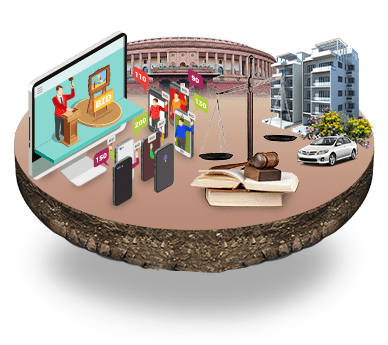
Grants are a critical source of funding to nations and local governments especially those battling fiscal constraints. Emerging economies in South Asia and sub-Saharan Africa lean on grants from multilateral donor agencies and development finance institutions to alleviate poverty and fund investments on priority areas like health, education and social security. In some local governments, grant funding has a share of up to 30 per cent in their annual operating budget. Government agencies who receive money from donor agencies can either spend funds on their own or devolve it to specific departments to fund targeted interventions.
The Need For GMS And ‘Real-Time’ Performance Monitoring
In any case, the onus is on the government agency or the nation to ensure that the funds are efficiently utilized without siphoning of money and quality of project execution and outcome is not compromised. This builds the case for an automated Grant Management System(GMS). Grant management means working with all the key stakeholders or main contributors in an organization to develop their strategic objectives around grants, identify grant opportunities, implement specific grant structure, evaluate successful projects, and streamline future proposals.
Donors or grantors need end-to-end GMS that helps in building transparency on performance data of projects to which their funds are linked. Without this critical data, stakeholders evaluating donor projects have no other method to appraise the value of aid spending, assess the impact of projects or learn from cases of successful interventions. Aid transparency is the key way to improve resource allocation. This is where seamless, interconnected GMS eases the process for the grantors -multilateral donor agencies, development finance institutions and sovereign nations and grantees- local governments, research institutions, non-profit organizations, philanthropic associations and local businesses. By proper monitoring and accounting of fund management performance, such a system provides for real time tracking of processes, tasks, reminders and feedback.
Where Do Challenges Hurt Donors & Recipients?
Donor agencies face this riddle to do more with less- managing an increasing count of grants, awards and grantees with less staff and budget crunch. Due to lack of a seamless ICT solution, donors or grantors face hassles in easy tracking and reporting of grant life cycle performance data in real-time to enable timely interventions and in mitigating inefficiencies and traceability issues stemming from paper-based business processes. With requirement for grants getting more complex, organizations need help in managing the entire grant cycle, from discovering new funding sources to measuring the outcome of the programs, projects, departments and sub‐recipients that received the money. In the absence of single centralized and homogenous grant management system, it is always hard to track the documentation records and measure project performance. Moreover, a poor grants management strategy can result in a failed program, returned funding, potential liability, intensive auditing, or a severed relationship with potential financial associates or external grantors.
CSM’s Grant Management Automation- Redefining Outcome Centric Funding
Our business process reengineering at the National Council of Science & Technology in Rwanda has automated the entire lifecycle of grants received from the National Research & Innovation Fund. It has led to seamless exchange of information and communication, reinforcing trust among stakeholders. Following this automation, the processes related to shortlisting applications, defining grant agreements, monitoring & evaluating project deliverables, and disbursing grants are completely paperless. Our GMS automates the entire process of grant discovery, budget planning, regulatory compliance, proposal submission, administrative reporting and grant monitoring. This enhances the efficiency & impact of grants programs. The centralized web application allows easy accessibility of grant information for all the stakeholders. The business process automation engine helps in expediting the work flow process and making it paperless & contactless. The system also ensures complete traceability of funds so that donor bodies are assured of project outcomes and predict possibilities of future funding.
In the future, GMS will be defined by the diversity of processes and paradigms they can support. And, since next generation GMS will embrace a wider range of capabilities, emerging technologies like Artificial Intelligence (AI) and Machine Learning (ML) will have key functions to perform. Technology will not just mine data efficiently but help determine which applications transform into grants.


























































We will verify and publish your comment soon.